The Huntington’s blog takes you behind the scenes for a scholarly view of the collections.
2019 Verso Retrospective
Posted on Mon., Dec. 23, 2019 by
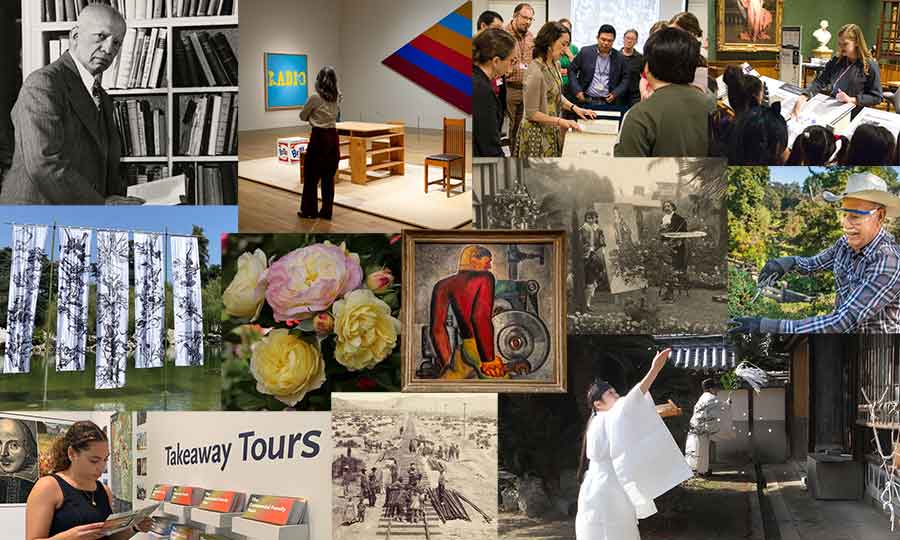
Collage of Verso highlights from 2019.
On Aug. 30, 1919, Henry and Arabella Huntington signed the trust agreement that established The Huntington, transforming their private estate and collections into a public institution. One hundred years later, we're on a roll: We invite you now to take a look back at a dozen of our favorite Verso stories published in 2019.
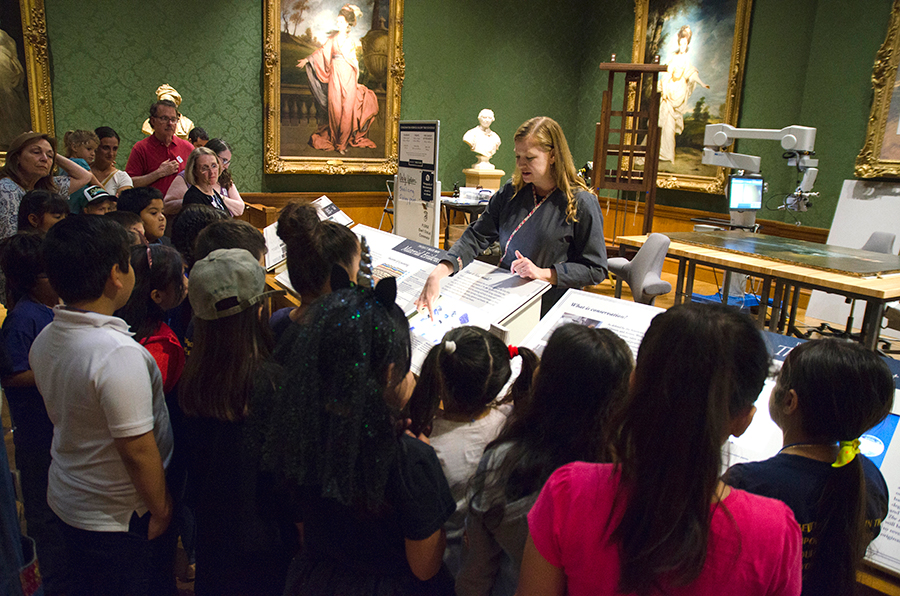
Christina O’Connell, senior paintings conservator, explains the blue pigments in The Blue Boy. Photo by Lisa Blackburn.
In January, we told you about more than 100 third-graders from two of The Huntington’s partner schools—Rockdale Visual and Performing Arts Magnet and Arroyo Seco Museum Science Magnet, both in Los Angeles—who spent a day at The Huntington exploring the science of art conservation. They met with Christina O’Connell, senior paintings conservator, for a lively Q&A session in the Thornton Portrait Gallery, where they talked about the conservation treatment O’Connell is performing on The Blue Boy (ca. 1770), the famous painting by Thomas Gainsborough (1727–1788). Read more.
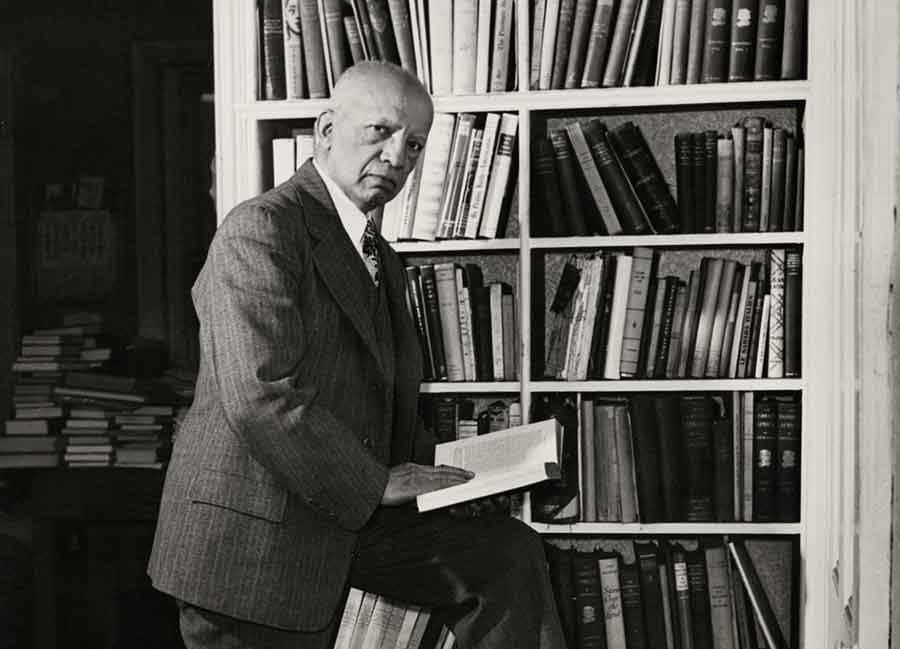
Carter G. Woodson in his library. Photo courtesy of the Association for the Study of African American Life and History.
Carter G. Woodson (1875–1950)—known today as the “Father of Black History” and creator of “Negro History Week” (later expanded to Black History Month)—was the focus of a February story that featured a letter at The Huntington by Woodson to one of his Harvard professors, famed historian Frederick Jackson Turner (1861–1932), and the first edition of The Negro History Bulletin, which Woodson established in 1937. Read more.
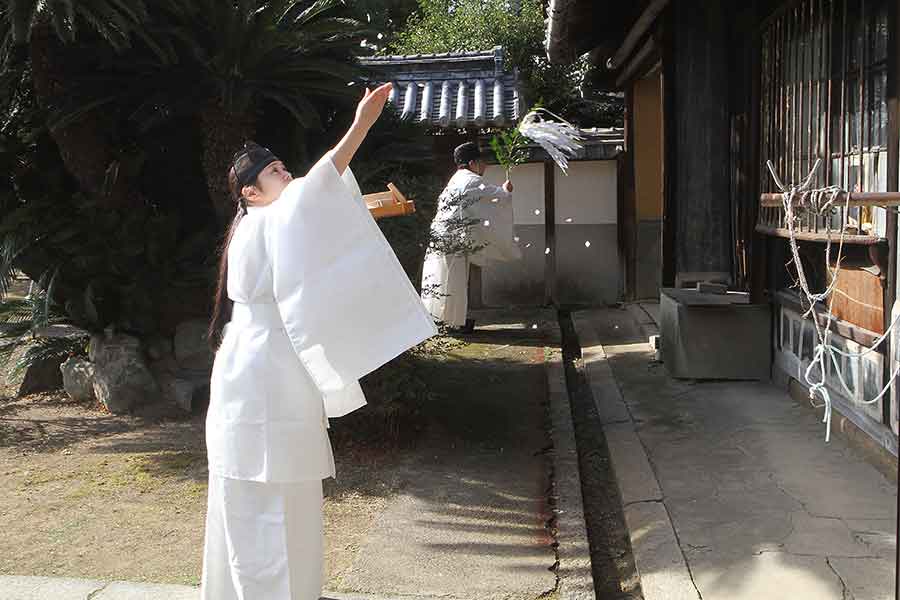
During part of the traditional Shinto ceremony to ensure the success of the project to move the Magistrate’s House from Japan to The Huntington, a priest swished a leafy branch, hung with lightning-bolt-shaped strips of paper, in front of the house, while a shrine attendant tossed white confetti in the air. Photo by Hiroyuki Nakayama. The Huntington Library, Art Museum, and Botanical Gardens.
Before The Huntington announced this year that it had acquired a 320-year-old Magistrate’s House from Marugame in Japan’s Kagawa Prefecture, a traditional Shinto ceremony took place to ensure the success of the project to move the building to its new home. In March, we shared that story—of a Shinto priest and a shrine attendant, robed in white, performing the ceremony. Read more.
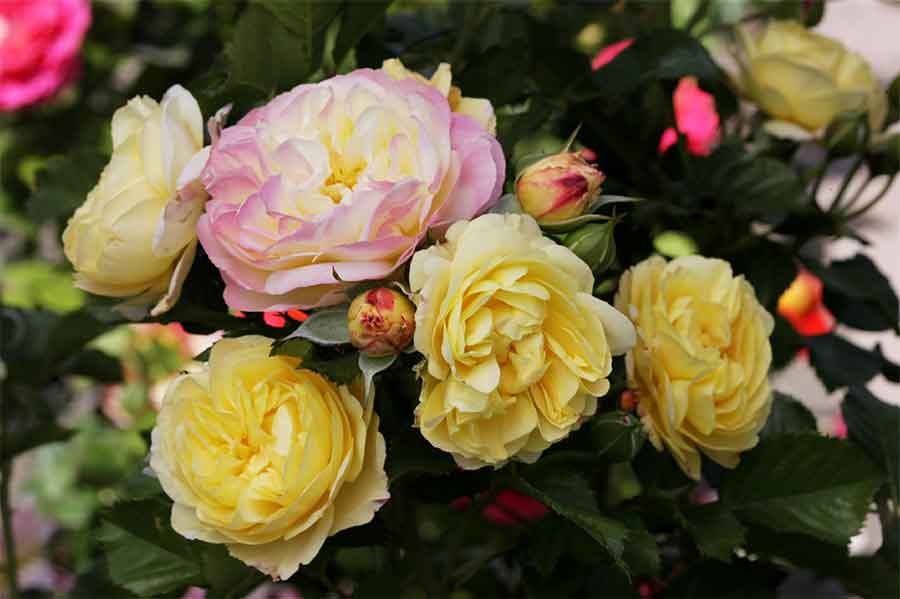
‘Huntington’s 100th’, the newly hybridized rose chosen to help celebrate The Huntington’s centennial year, is a large-flowered, multi-colored rose with an intense fragrance. Photo by Gene Sasse.
In April, we told you about a new rose named in honor of The Huntington’s Centennial year. A painstaking, decade-long hybridization process led by Tom Carruth, The Huntington’s E.L. and Ruth B. Shannon Curator of the Rose Collection, resulted in the creation of the beautiful and fragrant rose called ‘Huntington’s 100th’. Read more.
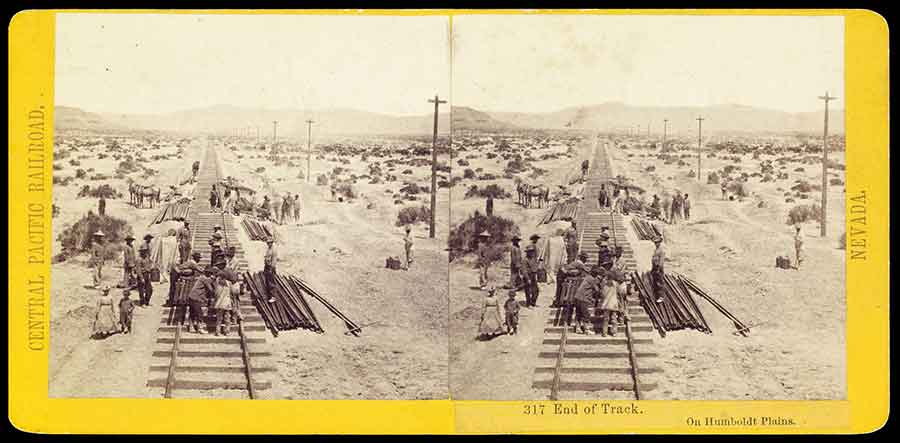
Chinese work crews provided the indispensable muscle for the backbreaking labor of building the Central Pacific Railroad, as seen in this stereograph by A. A. Hart. The Huntington Library, Art Museum, and Botanical Gardens.
To mark the 150th anniversary of the completion of the first transcontinental railroad in the United States at Utah’s Promontory Summit in 1869, we shared a story in May that featured illustrations and photographs in The Huntington’s collections that depict aspects of the monumental project, including a stereograph of Chinese work crews who contributed backbreaking labor to build the Central Pacific Railroad. Read more.
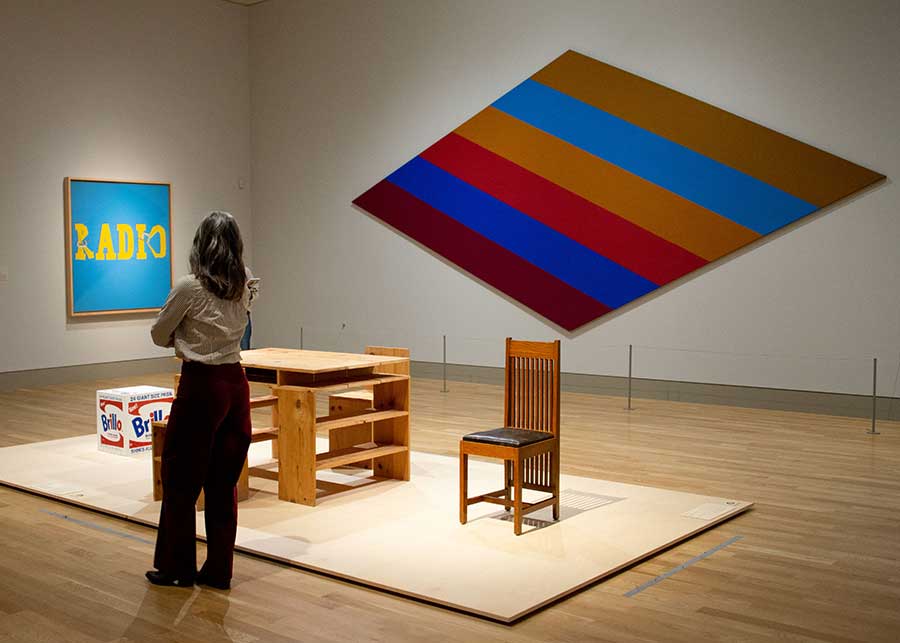
A new arrangement in the Virginia Steele Scott Galleries of American Art features a Brillo Box by Andy Warhol and furniture by Frank Lloyd Wright and Donald Judd. In the background are Ed Ruscha’s Radio (1964) and Kenneth Noland’s Par Transit (1964). Photo by Deborah Miller.
We highlighted in June a new arrangement in the Virginia Steele Scott Galleries of American Art that features a Brillo Box by Andy Warhol and furniture by Frank Lloyd Wright and Donald Judd. All three artists used the rectangle to achieve stripped-down, straightforward works that, when placed side-by-side, reveal how complex, personal, and historically contingent “simplicity” can be. Read more.
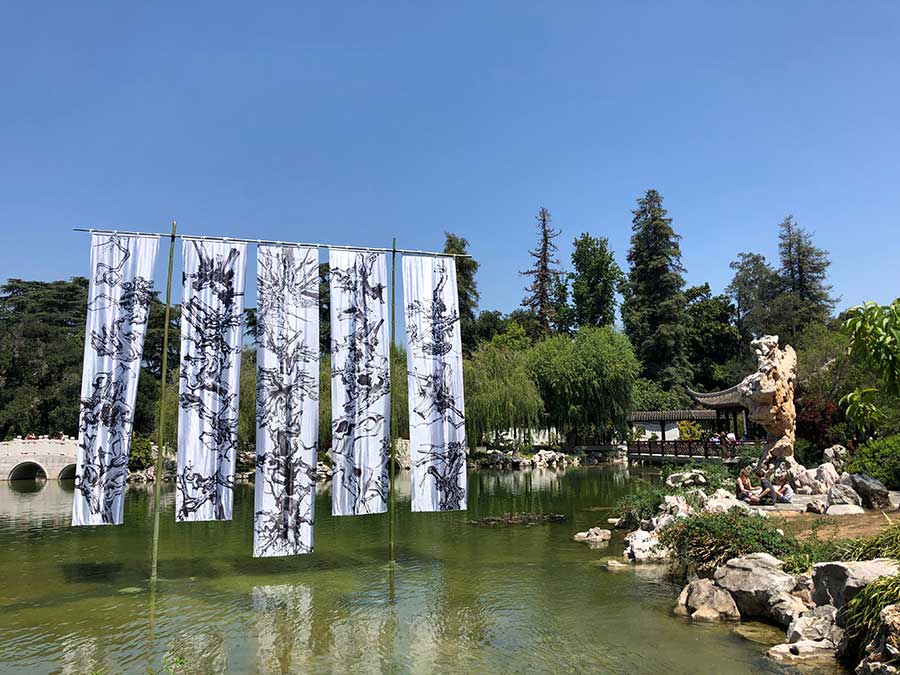
Tang Qingnian 唐慶年, born 1956, Chinese and American. An Offering to Roots 根之祭, 2017–2019. Five panels, digital print on nylon. Courtesy of the artist. Photo by Lucy Spriggs.
In July, we reported to you about an art installation in the Chinese Garden (Liu Fang Yuan 流芳園, or the Garden of Flowing Fragrance) of reproductions of five monumental banner paintings by Tang Qingnian 唐慶年, the 2019 Cheng Family Foundation Artist-in-Residence in the Chinese Garden. Two years in the making, the ink paintings—the largest are 18 feet long—memorialized the devastating wild fires that ravaged California in 2017 and 2018. Read more.
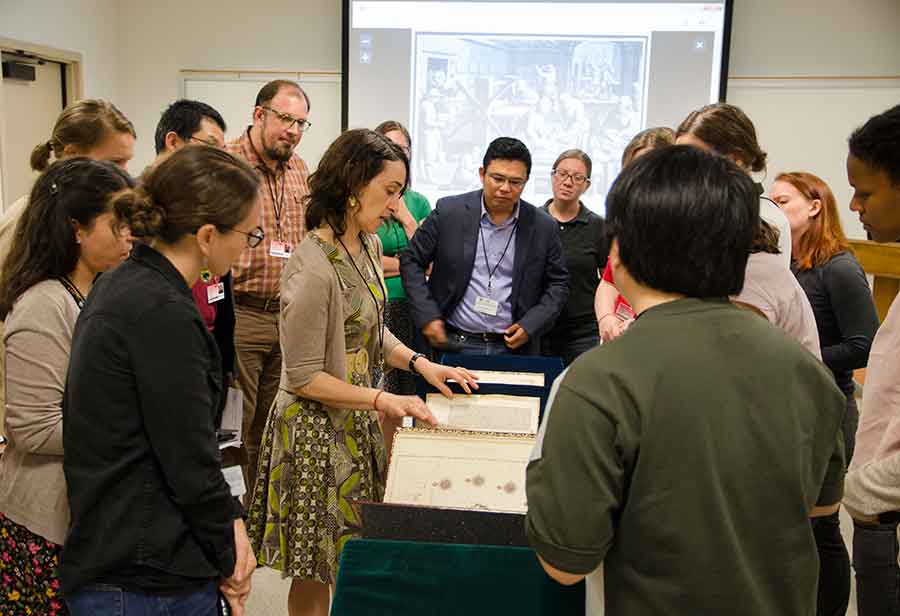
Participants in The Huntington’s first residential summer institute in the history of science, technology, and medicine gather around Daniela Bleichmar, professor of art history and history at the University of Southern California, to take a close look at some of the Library’s visual resources regarding natural history and Latin America. Photo by Lisa Blackburn.
We shared with you in August a story about the inaugural Huntington residential summer institute in the history of science, technology, and medicine. The program, part of the newly launched Caltech-Huntington Advanced Research Institute in the History of Science and Technology, provided graduate students and early career scholars in history, history of art, and history of science and technology with seminars and hands-on sessions with books, manuscripts, prints, and photographs. Read more.
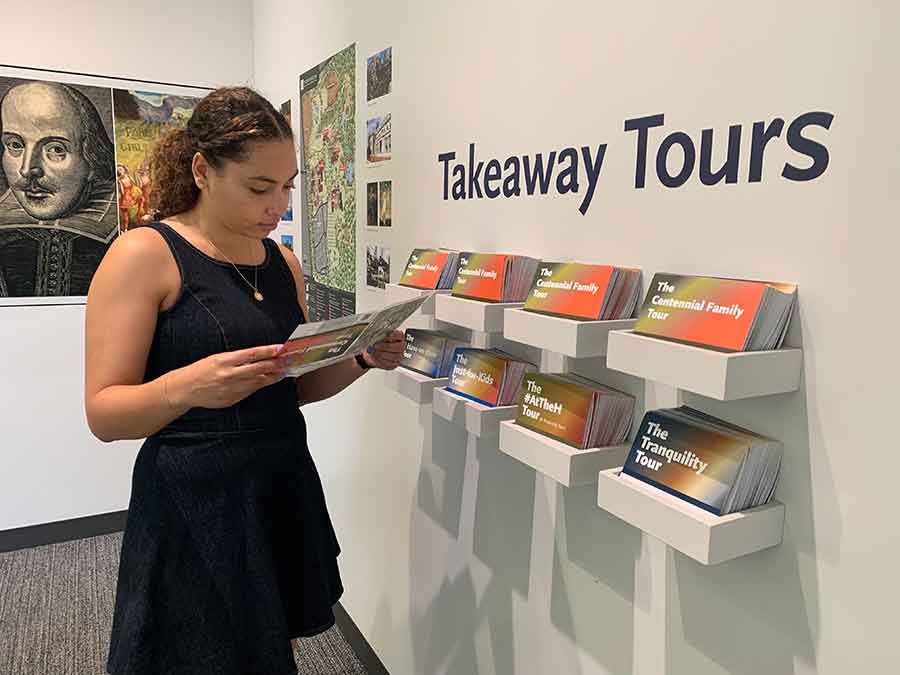
Self-guided Takeaway Tours, available in the Mapel Orientation Gallery, are tailored to fit your interests and encourage new ways of experiencing the collections. Photo by Christine Quach.
On Sept. 5, 2019, The Huntington kicked off its Centennial Celebration, which runs through September 2020, with a series of exhibitions, programs, and new initiatives, beginning with some new features in the Mapel Orientation Gallery. Created just for visitors, the space has been updated with installations highlighting our big birthday year. In particular, a historic timeline reveals major milestones and quirky moments in The Huntington’s history. Read more.
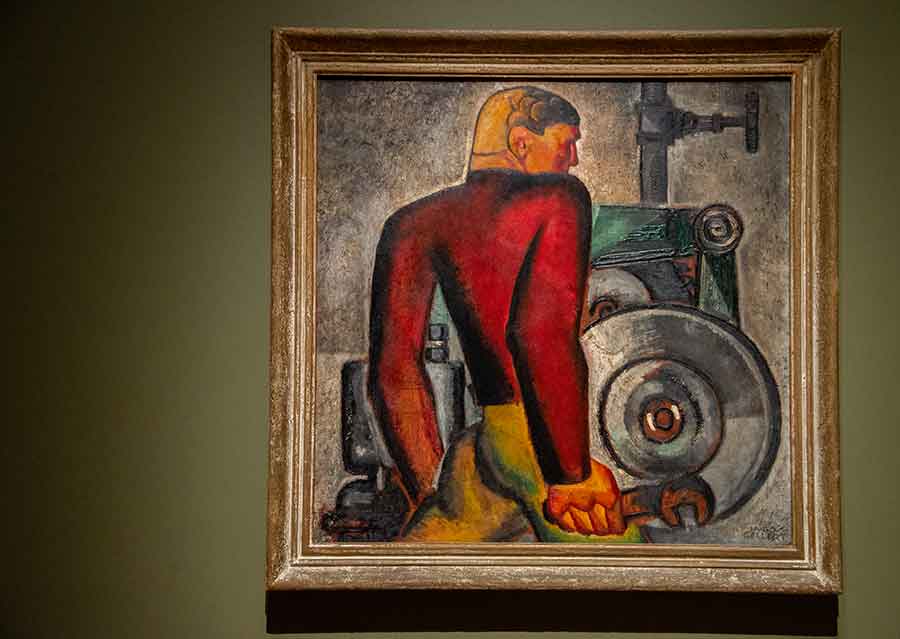
Hugo Gellert (1892–1985), Worker and Machine, 1928, oil on board, 30 1/2 x 30 7/8 inches. Collection of Sandra and Bram Dijkstra. Photo by Deborah Miller.
In October, we provided an in-depth look at the life and work of the Hungarian-American artist Hugo Gellert (1892–1985), whose painting Worker and Machine is not only eye-catching and Modernist, but also exemplifies Gellert’s revolutionary ideology, which drew inspiration from children, exalted the laborer, and called for social change in the face of fascism. Read more.
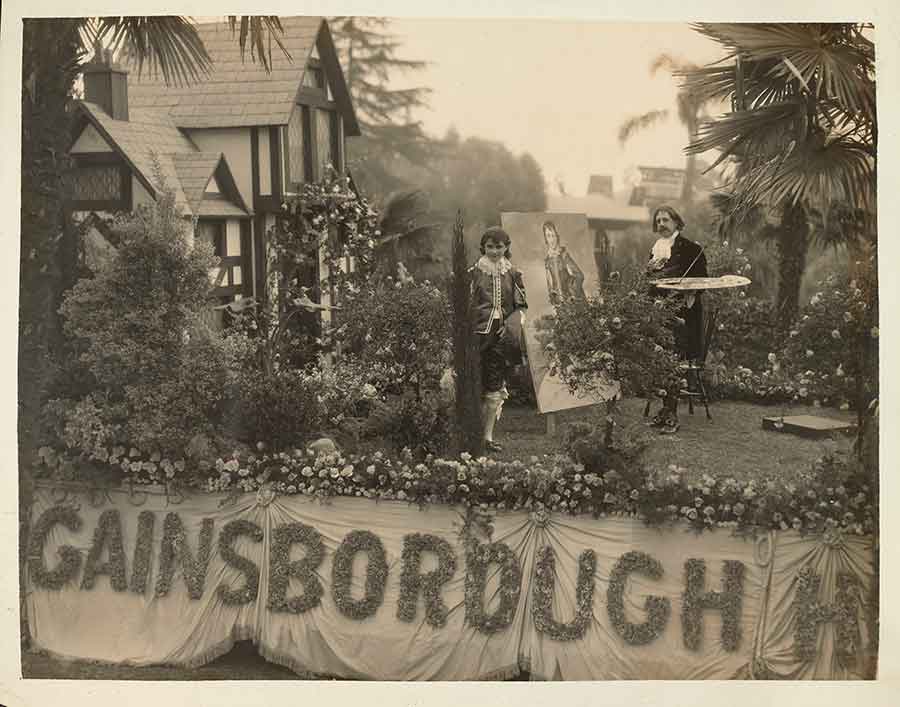
In 1928, a commercial float designed by J. T. Edwards advertised the new “Gainsborough Heath” residential subdivision in San Marino. The float, and the subdivision, were inspired by The Huntington’s British art collections. Edwards rode the float dressed as Thomas Gainsborough, and his daughter Honey portrayed The Blue Boy. J. T. Edwards Photograph Collection. The Huntington Library, Art Museum, and Botanical Gardens.
When New Year’s Day dawns on Jan. 1, 2020, tens of thousands of spectators will line Colorado Boulevard in Pasadena, bundled up against the morning chill to be part of a 131-year-old tradition: the annual floral extravaganza known as the Rose Parade®. For the first time in a half century, The Huntington joins the historic procession, highlighting its Centennial Celebration with a flower-decked entry of its own. As we look forward to 2020, we take a look back at The Huntington’s participation in three memorable parades from the past. Read more.
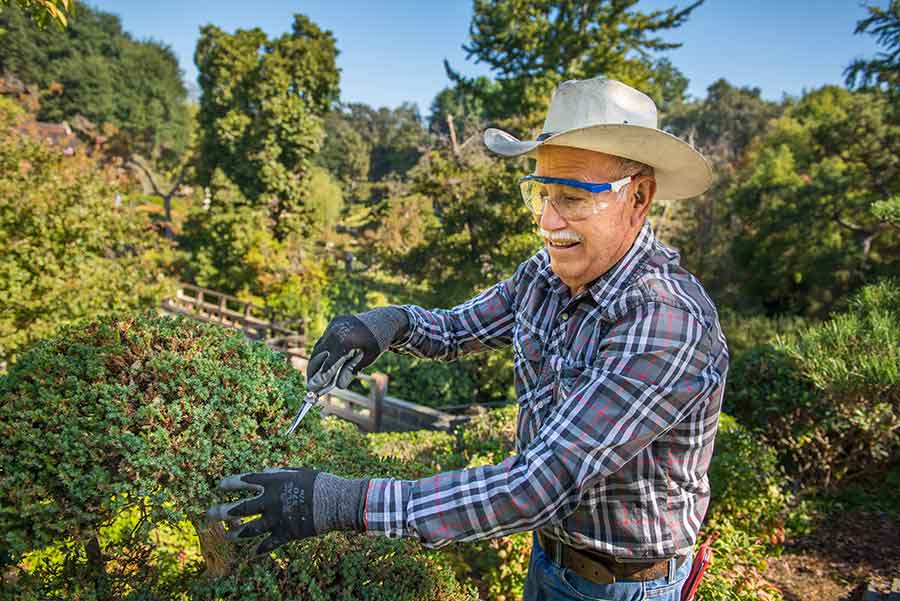
Over the years, Ramiro Ramirez Pinedo, 80, an employee at The Huntington for 50 years, has honed his skill at pruning to shape the pines and junipers in the Japanese Garden. Photo by Jamie Pham.
We also are taking a moment to celebrate a very special staff member, one who has worked at the institution for a half century. Ramiro Ramirez Pinedo, 80, started working at The Huntington in 1969. A gardener originally from Jalisco, Mexico, Pinedo got his start as a jack-of-all-trades—hoeing, weeding, and cutting lawns. Over time, he gravitated toward his true passion: pruning. Read more.
As we close out a historic year and turn to embrace yet another, we hope you will continue to enjoy the stories we share, year in and year out, at Verso.
Kevin Durkin is editor of Verso and managing editor in the Office of Communications and Marketing at The Huntington.